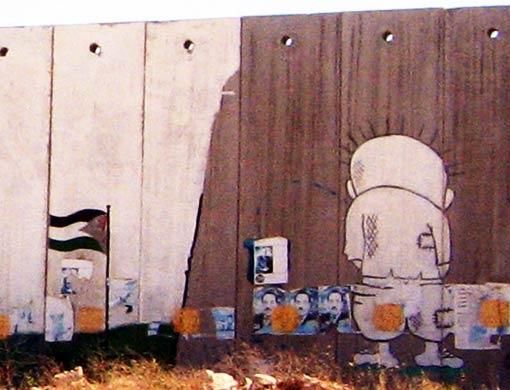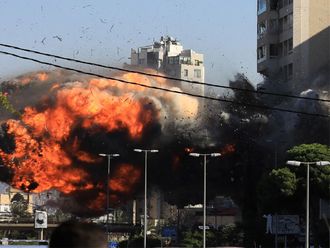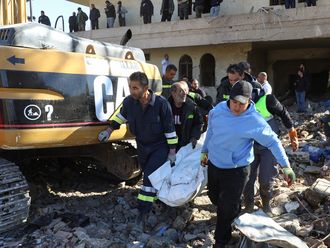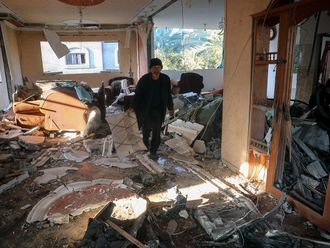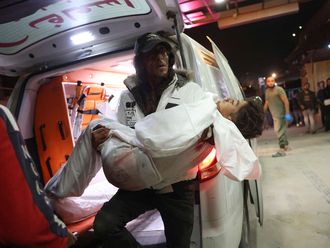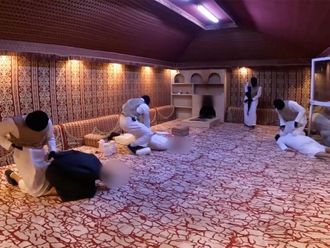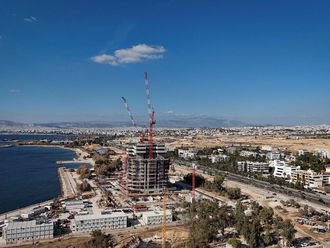Dubai: Name: Hanzalah
Age: Ten years old
Date of birth: Kuwait, 1969
Place of birth: Al Seyasah Newspaper in Kuwait
Family and friends: Palestinian people and millions of "weak" people
Father: The late Naji Al Ali, the most famous political cartoonist in the Arab region, who paid with his life for his sharp political criticism and creative drawings, and is still honoured by millions of people in the Arab region 20 years after his murder.
Hanzalah is the signature of the late artist. He appeared in most of Ali's 40,000 drawings throughout his 30-year career. He is an iconic symbol of Palestinian identity and defiance.
In one of his interviews, Ali described his invented "child", whose name means literally in Arabic "bitterness" and stands for bitter desert bush, saying the ten-year-old child represents his age when he was forced to leave Palestine and would not grow up until he could return to his homeland.
Outspoken
The artist continued of Hanzalah, "he is barefoot like many children in refugee camps. He is actually ugly and no woman would wish to have a child like him.. However, ... he is affectionate, honest, outspoken and a b**. He is an icon that stands to watch me from slipping.
"And his hands behind his back are a symbol of rejection of all the present negative tides in our region." Ali added "this thing that I have invented will certainly not cease to exist after me, and perhaps it is no exaggeration to say that I will live on with him after my death".
Al Ali proved to be right. Until today, Hanzalah is "the most genius Arab vision symbol and talisman," said Jordanian cartoonist Imad Hajaj. "There are very few people who succeeded in leaving am immortal vision in people's hearts," he told Gulf News. "It was Naji's most important fingerprint and final word".
Today, the child is omnipresent. It is seen in posters, on walls, on pendants, key chains, and shirts among other items. Ali, who was described by a prominent Western newspaper as the "nearest thing there is to an Arab public opinion", had no political affiliations and did not belong to any political group. The absence of slogans and dogma in his work is believed to have brought both success and criticism.
Ali was born in 1936 in a village named "Al Shajara" between Nazareth and Tiberias in what is now Israel. When he was nearly 10 years old, he was forced to flee to Lebanon, where he settled down with his family in the Ain Al Helweh camp for refugees in southern Lebanon.
Continually censored
It was in the late 1950s that the late Palestinian poet, writer and political activist Gassan Al Kanafani discovered Ali's talent for drawing and encouraged him to continue, "and eventually published some of my cartoons", said Ali in an interview.
The late artist's drawings were published daily in Cairo, Beirut, Kuwait, Tunis, London and Paris publications, as well as UAE newspapers.
The publications varied from far left to far right.
"Naji Al Ali was frequently detained by police and continually censored. He received many death threats during his life," noted a website established for him. "Because of his work, he was said to be one of the most wanted men in the Middle East..... he emphatically refused to speak about his oppressors and those who might censor his work; he drew them instead," the website added.
It was on July 22, 1987, he was shot in the head by a lone gunman as he was going to work at the Qabas offices in London. After five weeks in a coma on a life support machine, he died on August 30. It is still not known who was responsible for his murder. Different parties were pointed at, mainly Israeli and Palestinian. The PLO denied any involvement, and the Israeli Mossad then refused to pass on relevant information to their British counterparts.
A year later, the artist was awarded the International Federation of Newspaper Publishers' annual Golden Pen Award. The annual Award is given to individuals or organisations that have made an outstanding contribution to the defence and promotion of press freedom. A movie was made about his life, and the famous Egyptian actor Nour Al Shareef played the role of the artist.
Have your say
Are you familiar with his work? Do you have a favourite? How has he influenced people with his visual commentary? Tell us at letter2editor@gulfnews.com or fill in the comments form below.


